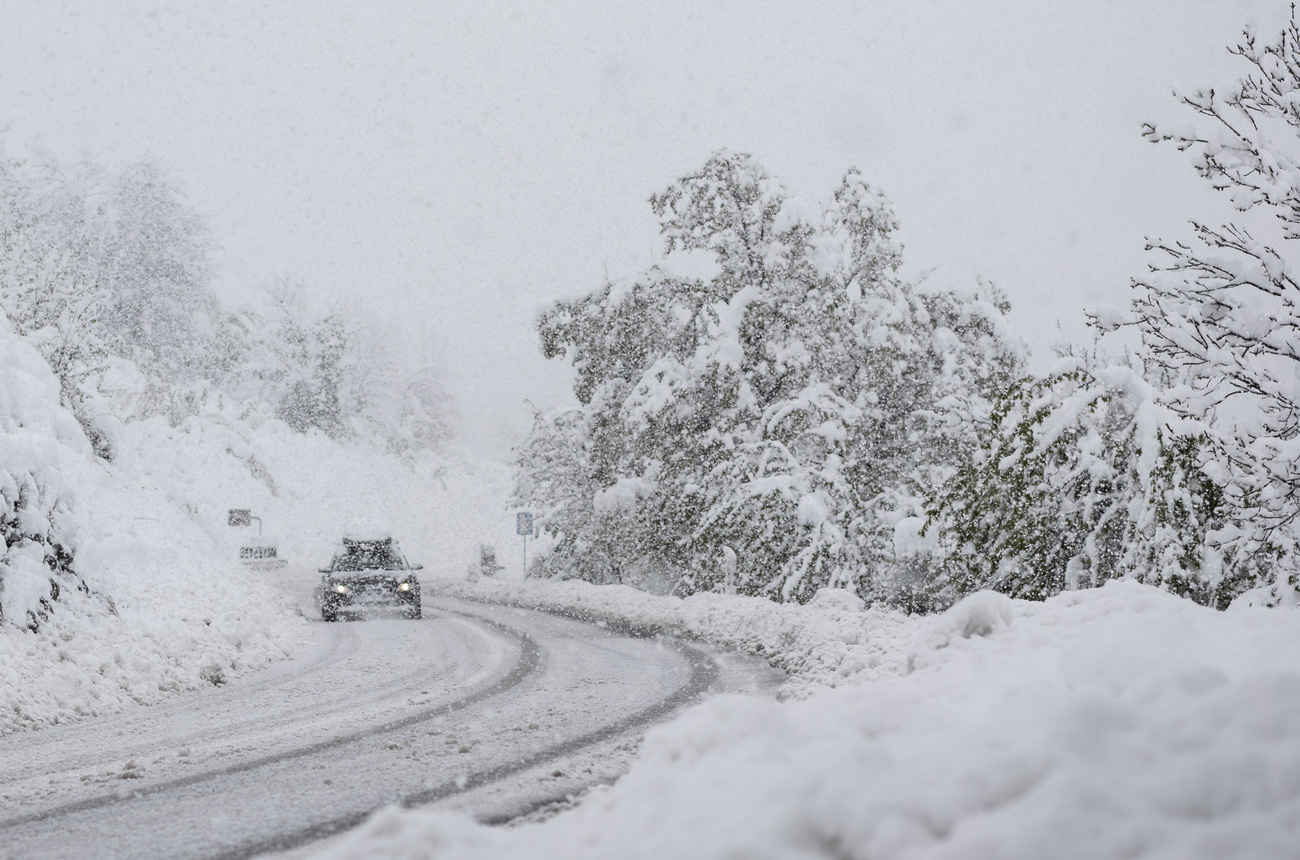Switzerland navigates own course through inflation maze

Central banks around the world are keeping savers and homeowners guessing about interest rates. Switzerland broke ranks with a drop in rates in March, from 1.75% to 1.5%. But predicting the future direction of interest rates is made more difficult by different countries facing unique inflationary pressures.
In 2022 and 2023, inflation was driven by uniform factors in many parts of the world. Most notably a huge rise in energy prices following Russia’s invasion of Ukraine. This was accompanied by a wave of pent-up consumer spending that had been frustrated by the Covid-19 pandemic and global logistical log jams. Consumer spending worldwide was further fuelled by rock-bottom interest rates, which were close to zero and even negative in some countries.
This forced central banks to raise interest rates to combat price increases. This year dawned with expectations of cooling inflation, to below 2%, which would reduce interest rates worldwide. But the reality is a fragmented situation in different parts of the world.
+ Inflation hits 30-year high in Switzerland
Switzerland, Sweden, the Czech Republic and Hungary have cut interest rates this year, along with China, which made a deeper cut than expected in February to ease the burden on the country’s ailing property sector.
Japan raised rates in March into positive territory for the first time in 17 years in answer to a spate of wage hikes. The United States Federal Reserve has kept rates on hold and on May 2 sounded less enthusiastic about future cuts than earlier in the year. The European Central Bank is also sitting on the fence with no change but is sending more positive signals about a possible interest rate cut in the summer.
As the world’s largest economy and dominant financial system, the US usually takes the lead in setting interest rates. But this time around there is less incentive for other countries to simply follow the lead of the Federal Reserve, according to EFG Bank chief economist Stefan Gerlach.
+ SNB makes unexpected cut to interest rates
“Everything hinges on whether stubborn high inflation in the US is driven by global or localised conditions,” Gerlach told SWI swissinfo.ch. If global factors, such as geopolitical instability or a worldwide rise in fossil fuel prices, are the cause of high inflation in the US, this would also have the same impact on other countries. In which case, other central banks are likely to take the same path as the Federal Reserve.
But Gerlach sees evidence of purely domestic drivers for US inflation. For example, rampant US government spending, which weighed in at $6.13 trillion (CHF5.56 trillion) last year, is partly responsible for stimulating consumer demand and inflation. This was coupled by a stock market rally at the end of 2023 that boosted the private share portfolios and pension funds of consumers.
Swiss course
If the Federal Reserve is being forced to hold high interest rates in the US largely because of isolated domestic conditions, this could result in other countries adopting very different monetary policies, Gerlach argues.
Restraining US growth with high interest rates could have the knock-on effect of dampening prospects in other countries, which are inextricably linked to the most powerful economy in the world. This would encourage other central banks to lower interest rates to stimulate their economies, suggests Gerlach. “The Fed could be unleashing dual monetary policy dynamics that pull in opposite directions around the world,” he said.
The Swiss National Bank (SNB) has been plotting its own course as one of the few central banks to lower interest rates this year.
Inflation in Switzerland has dropped to below 2% since June 2023, falling to 1% in March of this year (see graph). But no sooner did the SNB lower interest rates than consumer prices increased to 1.4% in April year-on-year. “In the current environment uncertainty remains elevated, and new shocks can occur at any time,” said SNB chair Thomas Jordan on April 26.
+ Swiss rental reference rate is raised
The bank Raiffeisen Switzerland also points out that the impact of a December hike in the reference rate for the Swiss rental market won’t become evident until the middle of this year.
Spared the worst
But some economists still expect a further Swiss rate cut later this year. Switzerland was spared the worst ravages of inflation by the high volume of energy it produces from hydro and nuclear power plants and the strength of the Swiss franc, which keeps down the cost of imports.

More
Explainer: how Switzerland is dealing with rising prices
”With energy prices easing again and the further normalisation expected in services prices due to weak domestic demand, conditions remain in place for the SNB to cut the policy rate again in 2024, perhaps already at the next meeting in June,” said EFG Bank economist GianLuigi Mandruzzato.
Part of the rise in April inflation was also attributable to people booking their hotels and flights for their summer holidays, according to the Federal Statistical Office.
The Swiss-based LGT Private Bank is also optimistic about lower interest rates in Switzerland sooner rather than later. “Inflation risks have not yet been completely overcome, but the Swiss National Bank is nevertheless expected to cut interest rates further over the course of the year,” the bank said in an investor note on May 2.
Edited by Virginie Mangin/ts

In compliance with the JTI standards
More: SWI swissinfo.ch certified by the Journalism Trust Initiative









You can find an overview of ongoing debates with our journalists here . Please join us!
If you want to start a conversation about a topic raised in this article or want to report factual errors, email us at english@swissinfo.ch.